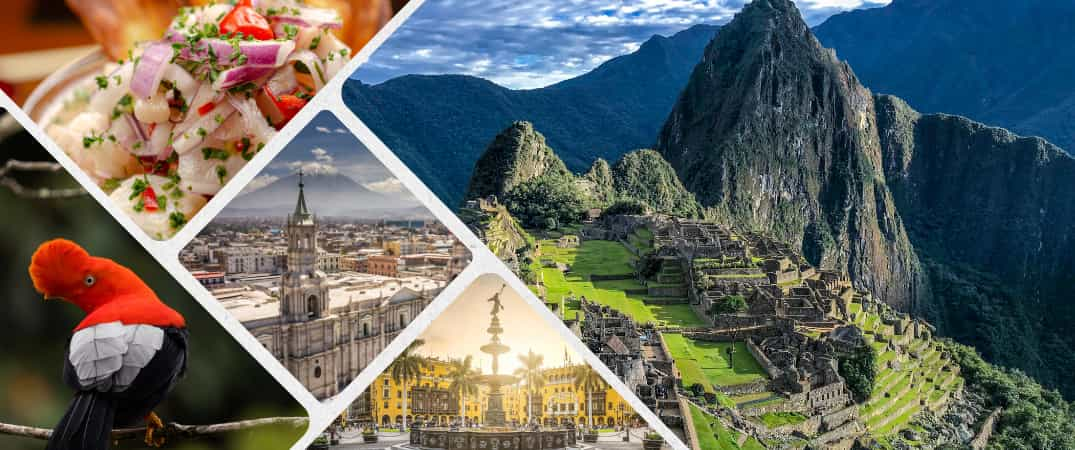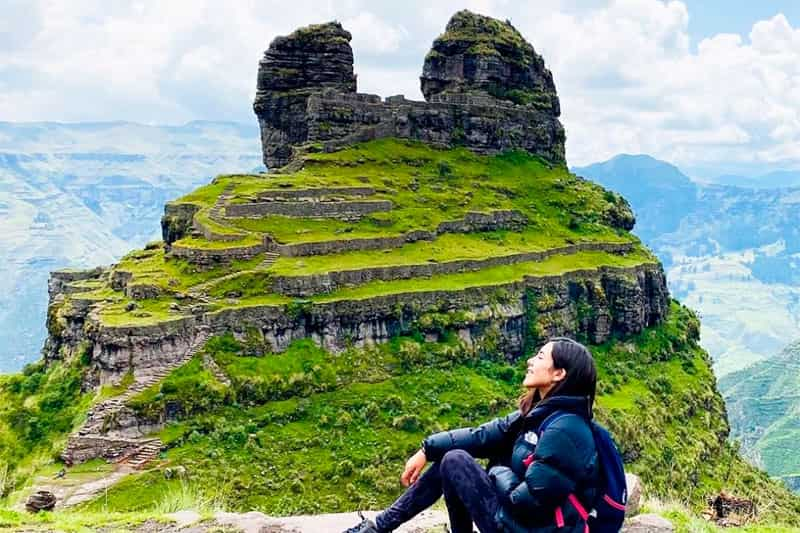Waqrapukara, located in the Cusco region of Peru, is an underexplored destination that offers a unique experience of connection with nature and history, far from the bustling crowds of typical tourist spots. Its remote location has allowed the site to remain almost untouched, providing visitors with the opportunity to immerse themselves in an environment of tranquility and awe.
A Remote, Peaceful Escape
Unlike other well-known archaeological sites, Waqrapukara invites travelers to explore its beauty without the typical crowds that accompany more famous locations. The fortress, which translates to “horn stone,” sits over 4,000 meters above sea level, offering breathtaking panoramic views that reflect the Incas’ mastery in adapting to their environment. From this vantage point, visitors can take in the expansive landscapes of the Andes, where the majestic mountains and valleys form a stunning backdrop to this ancient site.
The high-altitude location of Waqrapukara adds to its allure, as it remains largely undiscovered by mass tourism. This is what makes it a hidden gem for those seeking a deeper, more serene connection with Peru’s ancient cultures. The panoramic vistas and the peaceful atmosphere of the area provide the perfect setting for reflection and exploration.
A Journey Back to Inca Times
The journey to Waqrapukara is an adventure in itself. Visitors must embark on a hike that lasts approximately three hours from the village of Acomayo. During this trek, travelers are treated to some of the most stunning landscapes in the region, showcasing the rich flora and fauna that thrive in the Andean highlands. Along the way, visitors may encounter local communities that continue to preserve their ancestral traditions, adding an extra layer of cultural significance to the trip.
The path to Waqrapukara is more than just a hike; it is an opportunity to experience the natural and cultural richness of the Peruvian Andes. As visitors move closer to the site, the landscape gradually changes, with rocky terrain giving way to the architectural wonders that await at the top. For many, the final approach to the fortress feels like a step back in time, as the magnificent ruins rise above the surrounding valleys.
The Architecture of Waqrapukara
The architecture of Waqrapukara is one of the most impressive aspects of the site. The fortress is made up of a series of structures, including temples, homes, and ceremonial areas. Ingeniously designed to take full advantage of the site’s topography, the buildings incorporate the natural rocks into their construction. The stone walls, perfectly interlocked, have withstood the test of time, demonstrating the extraordinary craftsmanship of Inca architects.
As visitors explore the site, they can admire the intricate stonework that still remains intact, providing a glimpse into the advanced construction techniques of the Incas. The fortress’ strategic location atop a hill allowed the Incas to control the surrounding area, and its design reflects the careful consideration given to both military and ceremonial purposes.
At Waqrapukara, the lines between nature and architecture blur. The site’s natural rock formations have been integrated into the construction in such a way that the fortress appears to grow organically from the landscape. The massive stones that form the structures seem to merge seamlessly with the surrounding cliffs and peaks, offering a powerful example of Incan architecture harmonizing with nature.
A Connection with History
Waqrapukara is not just a place to admire beautiful ruins, but also a site that invites reflection on the history and culture of the Inca civilization. The fortress was once an important ceremonial and military center, and walking through its ancient pathways allows visitors to step into the past, pondering the spiritual and practical significance of the site for the Incas.
The remnants of agricultural terraces, plazas, and altars still preserve traces of the rituals and ceremonies that once took place here. These historical markers provide a sense of the spiritual and cultural life that defined the Inca empire. Waqrapukara’s role as a military stronghold is also evident in its strategic positioning, which provided a commanding view of the surrounding valleys and mountains.
As visitors move through the site, the combination of ancient structures, panoramic vistas, and rugged terrain evokes a sense of the Andean worldview. The Incas viewed the world holistically, seeing their environment as interconnected with the divine and the natural world. This deep reverence for nature and the gods is reflected in the design of Waqrapukara, where every element of the site seems imbued with spiritual significance.
Exploring the fortress allows visitors to connect not only with the physical remnants of the Inca civilization but also with the broader worldview of the Andean peoples. The site offers an opportunity to reflect on the ancient knowledge that guided the Incas in their relationship with the land, the cosmos, and the divine forces they believed governed their lives.
Flora and Fauna of the Region
During their hike to Waqrapukara, visitors will encounter a wide variety of flora and fauna native to the Andean highlands. The region is home to a diverse range of plant and animal species, many of which are unique to the area. Birdwatchers, in particular, will find Waqrapukara to be an excellent destination, as the site is home to numerous bird species, including some endemic to the highlands of Peru.
The landscape is dominated by the characteristic Andean flora, including grasses, shrubs, and hardy plants that have adapted to the harsh conditions at high altitudes. The unique ecosystem that surrounds Waqrapukara provides a stunning backdrop to the ruins, enriching the experience for visitors who are interested in both nature and history.
In addition to the plant life, the region also supports a variety of animal species, including insects, small mammals, and the occasional sighting of wild animals such as foxes and Andean condors. The combination of these diverse species with the ancient ruins creates a truly immersive experience, where visitors can explore the intersection of nature and culture in the heart of the Andes.
Practical Tips for Visiting Waqrapukara
For those wishing to visit Waqrapukara, there are several important tips to ensure a safe and enjoyable trip. First and foremost, visitors should come prepared for the varying climate conditions. Temperatures in the Andes can fluctuate dramatically, so it is essential to bring appropriate clothing for both warm and cold weather. Layers are highly recommended, as the weather can change quickly, especially at high altitudes.
Since the hike to Waqrapukara can be physically demanding, it is advisable to bring enough water and snacks to stay hydrated and energized during the journey. A camera is also a must, as the stunning scenery provides ample opportunities for photography. Visitors should also consider hiring a guide, as local guides can provide valuable insights into the history, culture, and natural environment of the site.
The best time to visit Waqrapukara is during the dry season, which runs from May to October. During this period, the weather is more stable, and the hiking conditions are better suited for exploration. It is advisable to check the weather forecast before embarking on the trip, as the high-altitude climate can be unpredictable.
Waqrapukara is a remarkable and often overlooked destination that offers a unique blend of natural beauty, historical significance, and cultural richness. Its remote location, combined with its well-preserved ruins and stunning landscapes, makes it an ideal destination for travelers seeking an authentic and peaceful experience in the Andes. Whether exploring the ancient ruins, admiring the breathtaking views, or simply reflecting on the Inca legacy, a visit to Waqrapukara promises to be an unforgettable journey into the heart of Peru’s ancient past.

